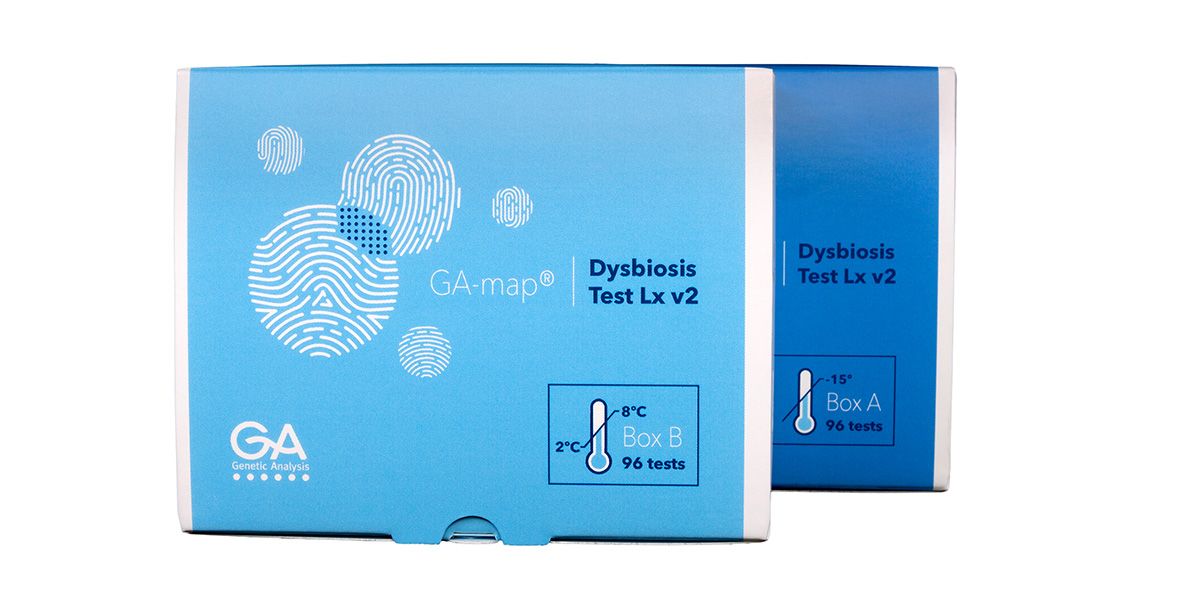Faecalibacterium prausnitzii: the Sentinel of the Gut

Faecalibacterium prausnitzii: The Sentinel of the Gut
Faecalibacterium prausnitzii is a gram-positive bacterium belonging to the Clostridiales order and Ruminococcaceae family. As one of the most abundant species in the human gut microbiome, it constitutes over 5% of the total bacterial population. Due to its significant health benefits, F. prausnitzii is often referred to as "The Sentinel of the Gut."
Faecalibacterium prausnitzii and the Immune System
Under normal circumstances, gut microbiota produces metabolites to communicate with the immune system and modulate immune responses. A well-balanced gut microbiota is essential for regulating immune responses and preventing inflammation. F. prausnitzii plays a crucial role in this process by producing butyrate, a short-chain fatty acid (SCFA) derived from dietary fiber fermentation.
How F. prausnitzii supports Immune Health:
- Maintains gut barrier integrity: By producing butyrate, it fuels intestinal epithelial cells (colonocytes), strengthening gut lining and preventing harmful substances from entering the bloodstream.
- Reduces inflammation: It inhibits production of NF-kB and IFN-y cytokines, known promoters of inflammatory responses.
- Promotes immune balance: It enhances TGF-β production, attracting T-reg cells that help suppress excessive immune reactions.
Due to its strong association with immune health, low levels of F. prausnitzii have been linked to the development of conditions like asthma and allergies.
Faecalibacterium prausnitzii and Inflammatory Bowel Disease (IBD)
The Role of F. prausnitzii in IBD
IBD, including ulcerative colitis and Crohn’s disease, is a chronic condition marked by recurring inflammation of the gastrointestinal tract. Research has identified gut microbiome imbalances (dysbiosis) as a key trigger of IBD, while the microbiome composition can also be associated with both disease course, disease severity and response to treatment.
Research findings on F. prausnitzii and IBD
IBD patients, particularly those with Crohn’s disease, exhibit low levels of F. prausnitzii. IBD has a hereditary component, and many of the genes shown to increase the risk of IBD are related to immune function. Genetic mutations in NOD2, a gene associated with immune regulation, correlate with reduced F. prausnitzii levels and more severe disease symptoms.
This highlights both the complexity of these diseases and the potential for using the microbiome, including F. prausnitzii, for diagnostic and therapeutic purposes.
Faecalibacterium prausnitzii and Irritable Bowel Syndrome (IBS)
Gut Microbiome and IBS
IBS is a common gastrointestinal disorder characterized by abdominal pain, bloating, and irregular bowel movements. Research suggests that an imbalance in the gut microbiota, dysbiosis, may contribute to IBS symptoms. Further, scientists have identified a signature gut microbiome that may be associated with severe IBS, including reduced levels of F. prausnitzii and other beneficial bacteria. Monitoring the levels of this and other beneficial bacteria can therefore be an important tool in the long-term management of IBS.
Potential of FMT in IBS Treatment
There is currently no cure for IBS, but some highly interesting studies using the GA-map® Dysbiosis Test have shown how fecal microbiota transplants (FMTs) can restore the gut microbiome of IBS patients, thereby greatly improving their symptoms and quality of life. This work also showed that F. prausnitzii and other beneficial bacteria were associated with less severe symptoms.
The positive effects of FMT on IBS highlights the role of the gut microbiota in the pathogenesis of the disease and is a good example of how microbiota restoration can play a significant role in future medicine.
Faecalibacterium prausnitzii and Neurological Conditions
Although perhaps surprising due to the apparent lack of physical contact between the gut microbiome and the brain, increasing evidence indicates that the microbiome influences brain function through the gut-brain axis. This connection is crucial for maintaining balance in the body, but disruptions caused by factors such as an imbalances gut microbiota, can cause disease. Disruptions in the gut microbiome are believed to play a key role in several neurodegenerative disorders, including Alzheimer's disease, Parkinson's disease, and multiple sclerosis.

The Gut-Brain Axis and Mental Health
In addition to the degenerative disorders mentioned above, the gut microbiome, including F. prausnitzii, play a role in psychiatric disorders, such as anxiety and depression.
It has long been known that individuals suffering from IBD and IBS have increased risk of anxiety and/or depression. Although previously attributed to the psychological stress and pain caused by the disease, we now know there are physiological mechanisms behind this phenomenon. Certain gut bacteria, including F. prausnitzii, induce the production of serotonin, a neurotransmitter crucial for mood regulation. The gut microbiota therefore has the power to alter brain chemistry, and dysbiosis can potentially contribute to the development of anxiety and depression.
How F. prausnitzii Supports Brain Health:
- Reduces inflammation linked to neurodegenerative diseases.
- Regulates serotonin production, a neurotransmitter crucial for mood balance.
- Associated with higher cognitive scores in clinical studies.
How Diet and Lifestyle Affect Faecalibacterium prausnitzii Levels
F. prausnitzii is recognized as an unparalleled beneficial factor in human health, with an outstanding effect on the health and physiology of the host. For a wide range of diseases and conditions, healthy levels of these bacteria seem to have the power to both reduce symptoms and prevent disease altogether. Lifestyle and dietary choices significantly impact F. prausnitzii levels.

Boosting F. prausnitzii Naturally
A plant-based or Mediterranean diet is associated with elevated levels of F. prausnitzii, probably due to its high content of dietary fibers, including inulin and other fructans, which are the main source of energy for this bacterium. Red wine has also been shown to increase F. prausnitzii levels, due to presence of certain polyphenols. A typical westernized diet with high intake of red meat, sugar, animal fat, and processed foods, however, can lead to reduced levels.
Low-FODMAP diet management
In IBS, the majority of patients report dietary triggers to their gastrointestinal symptoms. A diet low in FODMAPs (fermentable oligosaccharides, disaccharides, monosaccharides and polyols) is often recommended as part of management of IBS, as it has been shown to significantly improve GI symptoms. It has been suggested that gut microbiome profiling can be used to predict which IBS patients may experience the most benefit from the low-FODMAP diet.
Our research team at Genetic Analysis has contributed to studies investigating the predictive potential of the gut microbiota for dietary response in IBS patients. Although proven effective for IBS patients, the low FODMAP diet can be difficult to adhere to, and even have a long-term negative impact on the abundance of beneficial gut bacteria, including F. prausnitzii.
F. prausnitzii, Probiotics & Prebiotics
Because of its strong association with gastrointestinal health, F. prausnitzii is an obvious candidate for probiotic supplements. However, due to its strict anaerobic nature (oxygen intolerance), this bacterium is notoriously difficult to culture and to keep alive for therapeutic purposes. Therefore, more resilient bacteria such as Lactobacillus and Bifidobacterium strains are more commonly used in probiotic formulations.
On the other hand, prebiotics provide dietary fibers that promote the growth of beneficial bacteria, supporting a balanced gut microbiota.
How to Test and Monitor F. prausnitzii Levels
Recent research using detailed taxonomic mapping of bacteria genomes, have led to a split of Faecalibacterium prausnitzii into several new species, including F. prausnitzii, F. butyricigenerans, F. longum, F. hattori, F. gallinarum and F. duncaniae. However, since most of the current knowledge on F. prausnitzii is based on the previous annotation, this article is using this classification.
The GA-map® Dysbiosis Test detects all the novel Faecalibacterium species listed above through its F. prausnitzii probe. Since all of them are regarded as beneficial for gut health with highly overlapping functions, the GA-map® Dysbiosis Test ensures detection of this large and highly clinically relevant group of bacteria, providing measurements relative to healthy reference population.

Why Monitor F. prausnitzii?
- Supports preventive healthcare by identifying early signs of gut imbalances.
- Aids in disease management for conditions like IBS, IBD, and neurological disorders.
- Optimizes dietary and probiotic interventions tailored to individual microbiome profiles.
Conclusion
Faecalibacterium prausnitzii is a highly beneficial gut bacterium with significant implications for immune function, digestive health, neurological conditions, and overall well-being. Maintaining optimal levels through diet, lifestyle, and microbiome monitoring can play a vital role in both preventing and managing chronic diseases.
The GA-map® Dysbiosis Test offers a valuable tool for tracking F. prausnitzii levels, providing measurements relative to an expected range in healthy adults, and making it an essential component of personalized gut health strategies.
Future research may further uncover the therapeutic potential of F. prausnitzii in probiotics, prebiotics, and microbiome-targeted therapies.
